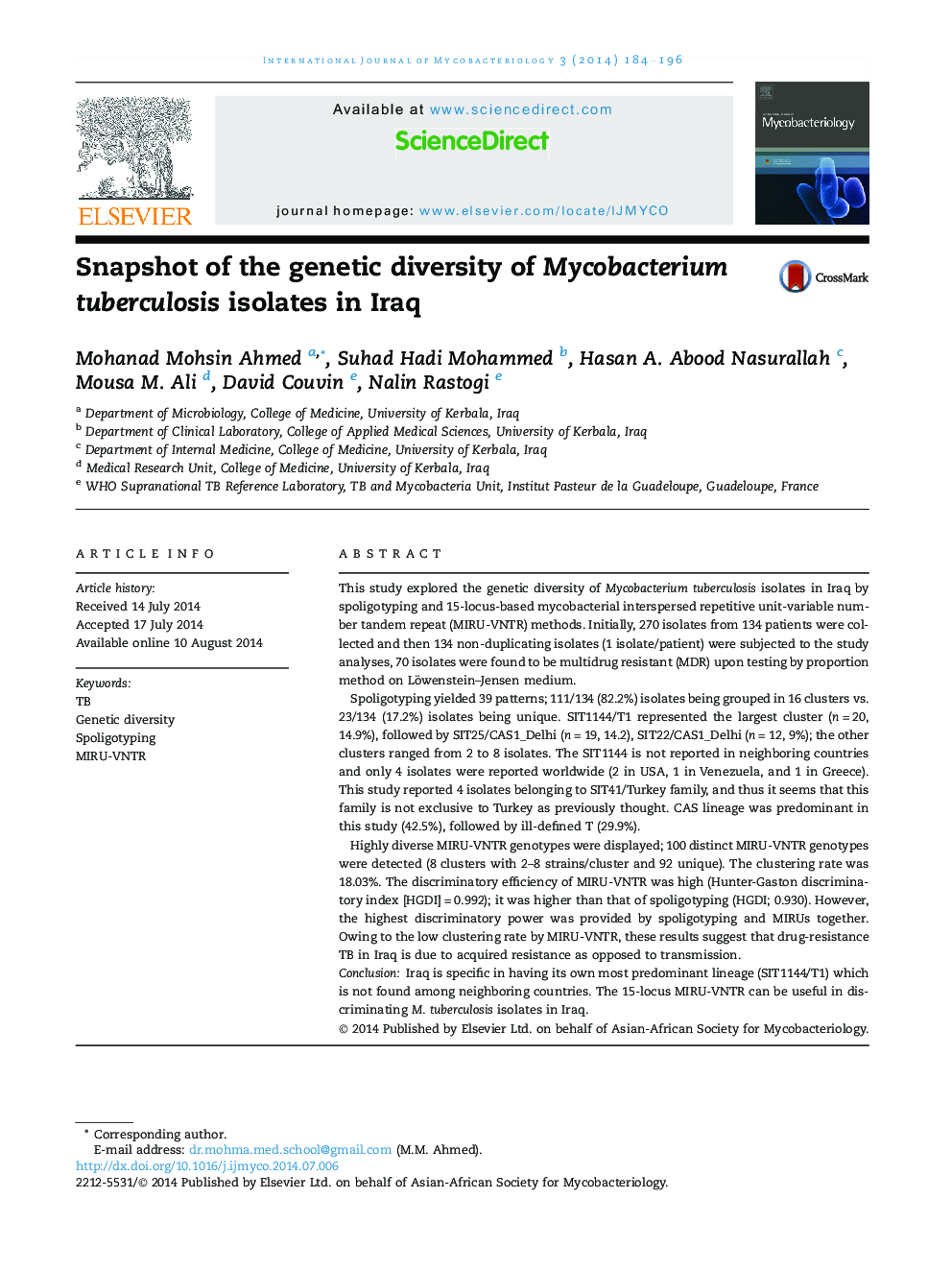| کد مقاله | کد نشریه | سال انتشار | مقاله انگلیسی | نسخه تمام متن |
|---|---|---|---|---|
| 3405266 | 1593312 | 2014 | 13 صفحه PDF | دانلود رایگان |
This study explored the genetic diversity of Mycobacterium tuberculosis isolates in Iraq by spoligotyping and 15-locus-based mycobacterial interspersed repetitive unit-variable number tandem repeat (MIRU-VNTR) methods. Initially, 270 isolates from 134 patients were collected and then 134 non-duplicating isolates (1 isolate/patient) were subjected to the study analyses, 70 isolates were found to be multidrug resistant (MDR) upon testing by proportion method on Löwenstein–Jensen medium.Spoligotyping yielded 39 patterns; 111/134 (82.2%) isolates being grouped in 16 clusters vs. 23/134 (17.2%) isolates being unique. SIT1144/T1 represented the largest cluster (n = 20, 14.9%), followed by SIT25/CAS1_Delhi (n = 19, 14.2), SIT22/CAS1_Delhi (n = 12, 9%); the other clusters ranged from 2 to 8 isolates. The SIT1144 is not reported in neighboring countries and only 4 isolates were reported worldwide (2 in USA, 1 in Venezuela, and 1 in Greece). This study reported 4 isolates belonging to SIT41/Turkey family, and thus it seems that this family is not exclusive to Turkey as previously thought. CAS lineage was predominant in this study (42.5%), followed by ill-defined T (29.9%).Highly diverse MIRU-VNTR genotypes were displayed; 100 distinct MIRU-VNTR genotypes were detected (8 clusters with 2–8 strains/cluster and 92 unique). The clustering rate was 18.03%. The discriminatory efficiency of MIRU-VNTR was high (Hunter-Gaston discriminatory index [HGDI] = 0.992); it was higher than that of spoligotyping (HGDI; 0.930). However, the highest discriminatory power was provided by spoligotyping and MIRUs together. Owing to the low clustering rate by MIRU-VNTR, these results suggest that drug-resistance TB in Iraq is due to acquired resistance as opposed to transmission.ConclusionIraq is specific in having its own most predominant lineage (SIT1144/T1) which is not found among neighboring countries. The 15-locus MIRU-VNTR can be useful in discriminating M. tuberculosis isolates in Iraq.
Journal: International Journal of Mycobacteriology - Volume 3, Issue 3, September 2014, Pages 184–196
